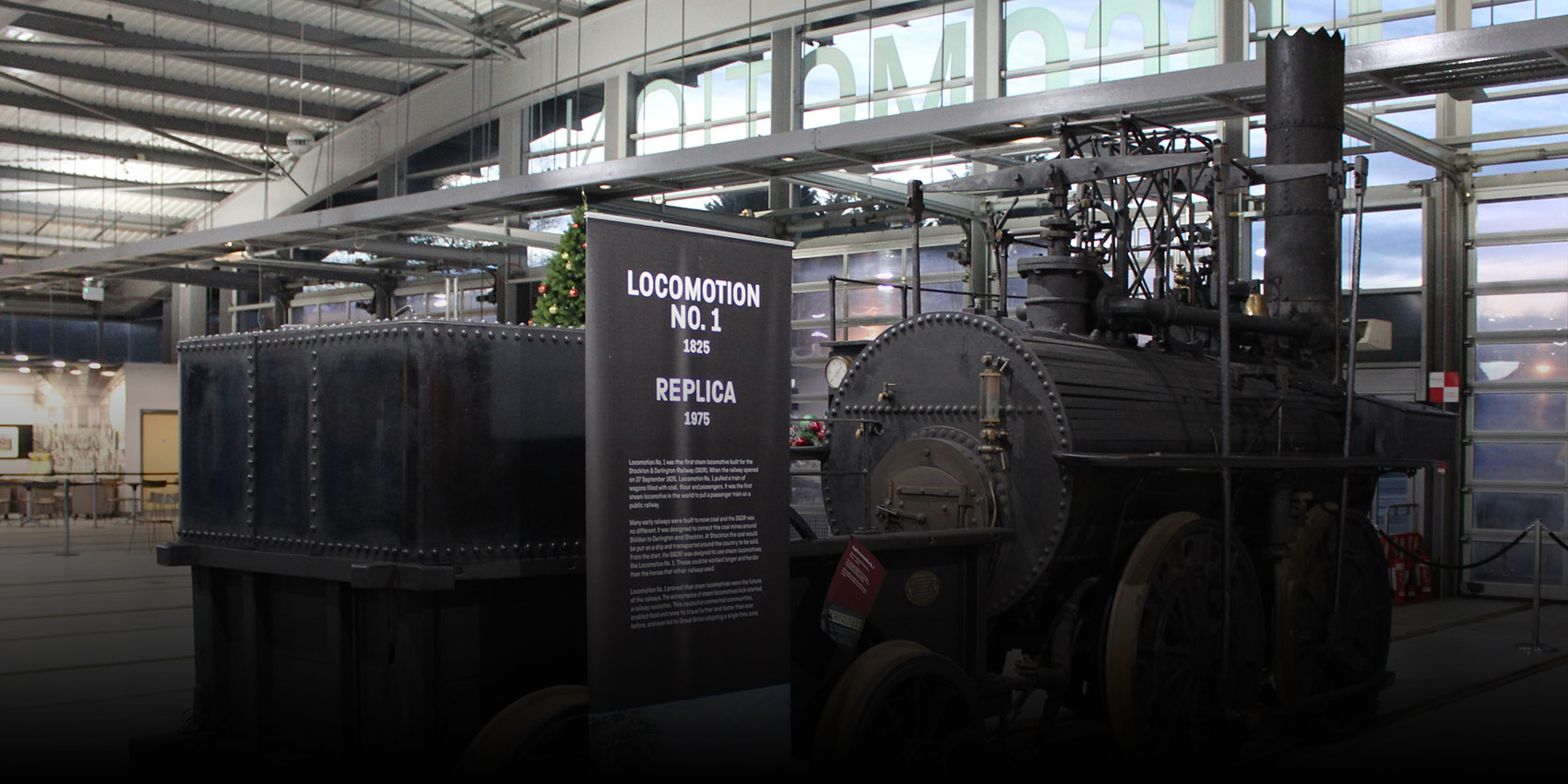It’s been a good few months since I last wrote a blog post updating you on the ongoing interpretation project at Locomotion—so what’s been happening? Well, I’m glad to say that all the new banners have now been delivered, installed and are waiting to be read by eager eyes!
In this blog post I’m going to share some pictures of the interpretation in situ to whet your appetite for when you visit the museum to see them. Then I’ll quickly update you all on what’s next for the interpretation (and me) at the museum. Enjoy!
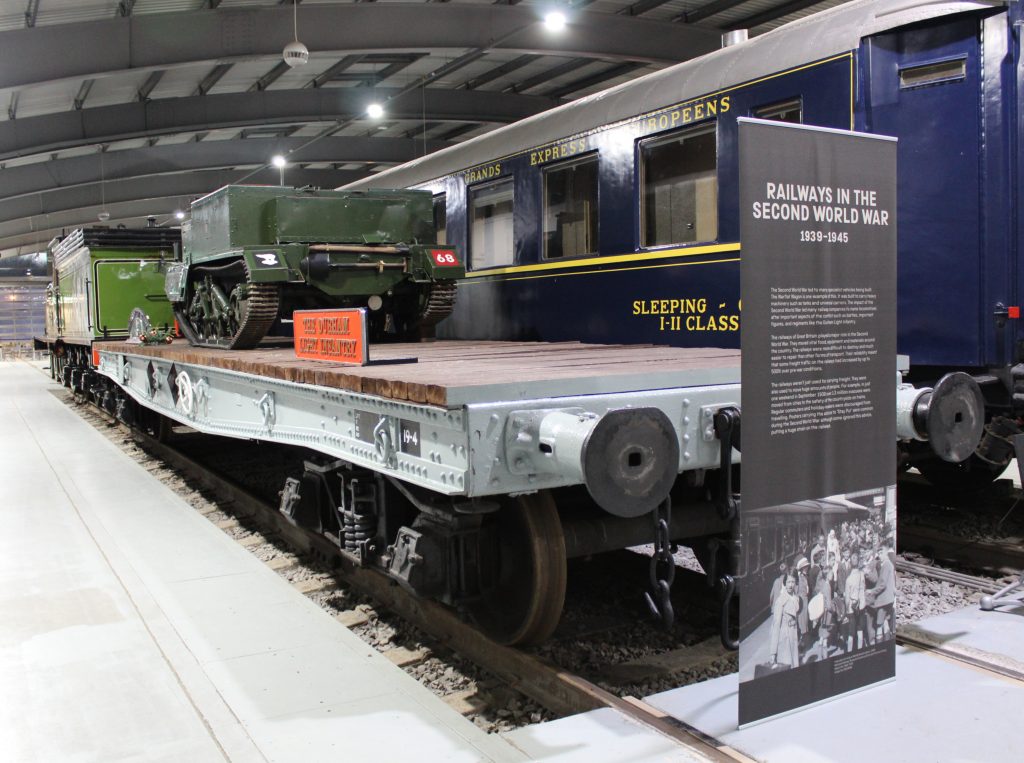
I’ll admit that getting to the point where every banner was installed did take a while. Most of them were delivered and installed in mid-November, so if you’ve been to the museum recently you will have already seen these taking pride of place next to some of the most popular exhibits in the museum.
However, the double-width banner telling the story of Timothy Hackworth and his influence took a little longer to print than the others and I only managed to get this installed in early December.

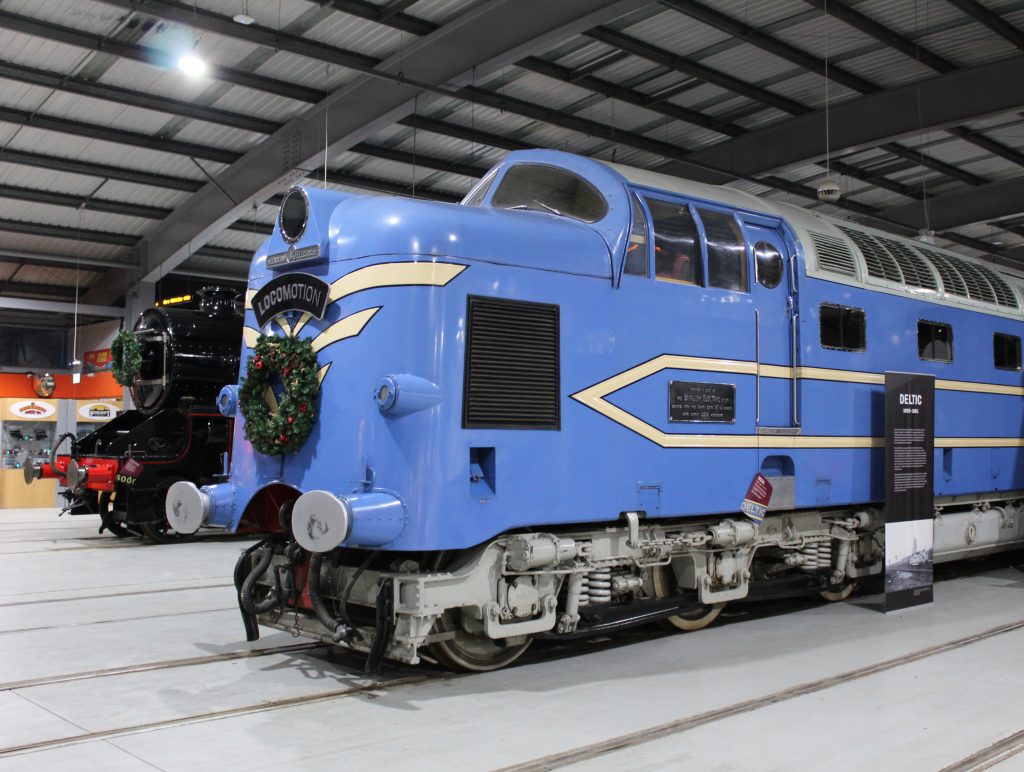
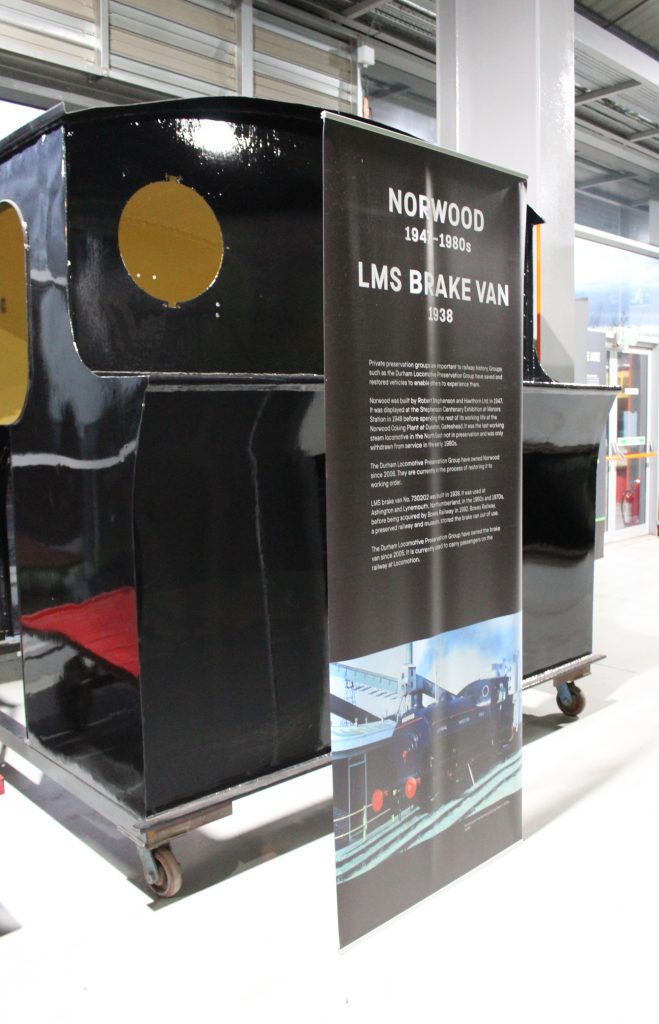

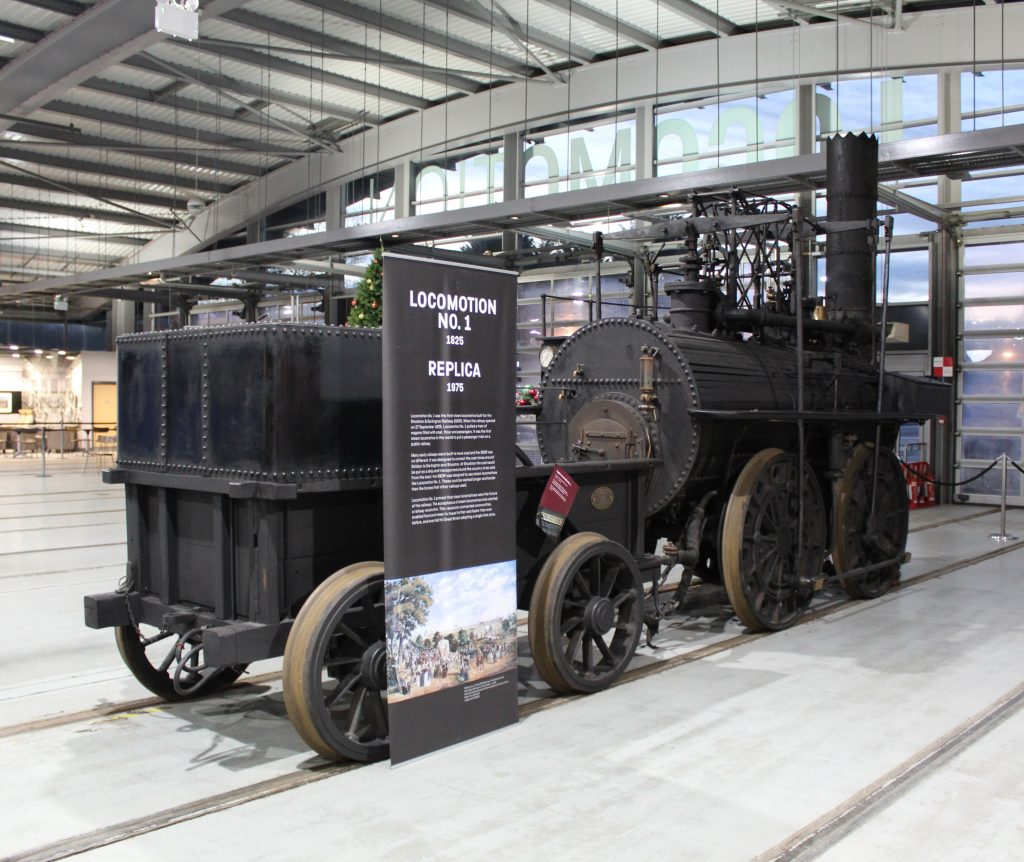
SO WHAT’S NEXT?
With these banners completed, I’ve made a good start on one of three main types of interpretation that you’ll see at Locomotion.
The three types are:
- Boards which tell the broad story of the railways (passengers, freight, development and innovation)
- Banners and window vinyls which give context to vehicles in the collection (notable people, events and organisations)
- Panels which tell the stories of specific vehicles in the collection (locomotives, carriages and wagons)
Next up for me is the research, writing and design work for the vehicle interpretation panels. I’ve already finished some of them and I’ll include a sneak peek at one here.

After that, it’s on to the boards which tell the broad stories of the railways. When I’ve completed all of this, you’ll be able to easily explore the stories at the museum which fascinate you the most. Only interested in facts about Green Arrow? We’ve got you covered! Want to understand the impact that the Second World War had on the railway? We’ve got that too! Do you only have two minutes and want to understand why early railway carriages looked so weird? Easy peasy!
Hopefully you’ll get the chance to visit the museum and see the interpretation for yourself. You should see improvements in the quality of writing as I learn more and implement different techniques. That doesn’t mean I’ll stop learning though—so please do comment here, send me an email, approach me in the museum or write a comment card to let me know what you think. It’s all appreciated!
I hope you’ve enjoyed reading this blog series as much as I’ve enjoyed writing it—hopefully I’ll be back with more updates soon.
